Many thanks to Kurt Rausch, Tom McCabe, and Brian D. Bunk for their help and comments. Any errors below are my own.
The 1905 tour of Canada and the United States by the English amateur team the Pilgrims was widely reported in the press. Soccer organizers recognized at the time the tour was a pivotal moment in booming the development of the game in the US, one which saw soccer “placed on a higher plane than ever before.”[1] That a visit by a British team would bolster interest in soccer was recognized before the Pilgrims arrived. Reports from 1878 discuss the possibility of a tour of Canada and the US by a team backed by the Scottish Football Association.[2] Over the summer of 1890 the possibility of a tour by another Scottish team was widely reported.[3] A visit by the famed Corinthians team was announced in 1893 and again in 1904 before falling through.[4] Possible tours by Sunderland (1894), Everton, and Celtic (both 1898) also appeared in US newspapers.[5]
While none of these tours came to fruition, the Philadelphia Inquirer had local history to back up its assertion in December 1904 that soccer would attain “great popularity throughout the states, especially if a visit from an English team can be arranged,” noting “International contests always have, and always will attract widespread attention.”[6] International cricket matches in Philadelphia were a familiar occurrence and drew large crowds. In October 1901, after soccer’s initial growth in the city prior to the Panic of 1893 and subsequent decline, a soccer match between the visiting Bosanquet cricket team of England and the local Belmont Cricket Club’s soccer team aroused “a pronounced public interest in the game that was previously comparatively unknown to the sports loving residents of this city.” The Bosanquet friendly ignited an explosion in the formation of clubs within and around the city. The visit by the Pilgrims further accelerated this development, helping to establish Philadelphia’s place as a leading center of soccer in the United States.[7]
Of course, the US was no stranger to international soccer competition. International matches against Canadian sides began in the US with the visit of a representative Western Football Association team to St. Louis in December 1884. Contests against Canadian sides continued after that with some frequency. Between 1884 and 1905, US and Canadian teams met in no fewer than 190 matches in the form of club and association friendlies, as well as international tournaments associated with the 1901 Pan American Games, the 1904 Olympics, and the 1905 Lewis and Clark Centennial Exposition. Between 1890 and 1900, Detroit clubs also entered and won championships in the Western Football Association’s Challenge Cup tournament and the cross-border Peninsular League. US sides in these international contests hailed from fourteen states. In the Northeast, international matches against Canadian opposition included teams from Buffalo and Barre, Vermont, Fall River and Pawtucket in New England, Kearny and Newark in New Jersey, and Pittsburgh and Philadelphia. In the central states, teams from St. Louis, Detroit, Chicago and Braidwood in Illinois, and also West Superior in Wisconsin and St. Paul in Minnesota, played Canadian sides. On the West Coast, Seattle, Portland, and Los Angeles clubs faced teams from across the northern border.
These international contests helped to confer legitimacy to embryonic soccer scenes which also benefited from exposure to what were often more experienced and tactically sophisticated opponents. At a time when soccer was largely unknown outside of British immigrant communities, newspaper coverage of higher profile international matches helped grow interest in, and awareness of, the game. Such contact also led to the first matches in Britain involving US-based players. Following the June 1891 Canadian tour by the All-New England League team, players from Fall River and Pawtucket were selected for the Canadian American team that played fifty-eight matches over twenty weeks between August 1891 and January 1892 in Ireland, Scotland, and England.[8]
But the first transatlantic matches between US and British-based teams actually occurred ten months before the Canadian American team departed. On November 19, 1890, the reserve side of Brooklyn’s Nonpareil club, made up of workers from the New York Herald’s composing room, defeated a side made up of crewman from the Cunard Line steamship Umbria 3-1 at the Nonpareil’s Ridgewood grounds.[9] Newspaper reports have been found documenting 156 matches involving British ship-based crews in the US between 1890 and 1905 (click here for a year-by-year list of the matches). Some of these accounts describe additional matches for which no reports have been located and it is likely many more such international matches were otherwise not reported. These matches include games played in New York, New Jersey, Rhode Island, Massachusetts, Oregon, California, Hawaii, and Texas.
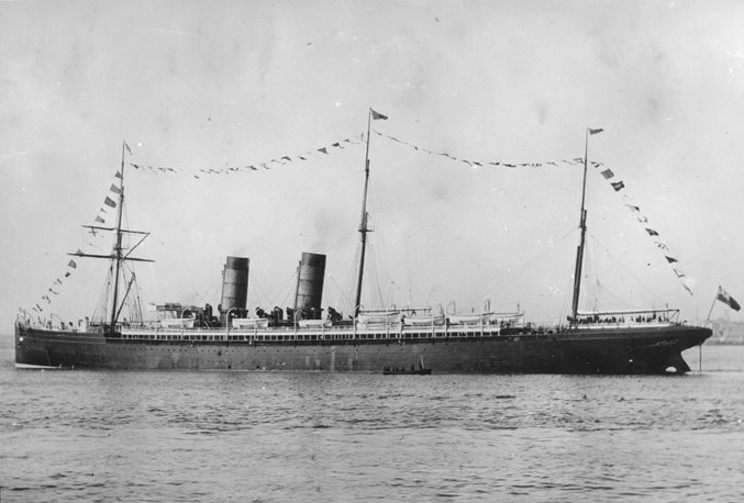
As was the case against Canadian sides, matches against British ship-based teams helped to generate interest in soccer. The area around New York Harbor, the cradle of the American Football Association, had been a leading center of the game in the US since the mid 1880s. There, teams made up of crewman from British transatlantic ocean liners offered valuable opportunities for competitive play as well as players to be recruited for important matches. In other areas such as Oregon, California, Hawaii, and Texas, matches against merchant ship and Royal Navy crews provided valuable exhibitions of how soccer was played and competitive matches where few local sides existed. Some of the matches against British ship crew teams were among the earliest recorded soccer games in these states.
Note: Except for one steamship registered in New Zealand, all the ships referenced below were registered in England, Scotland, what is now Northern Ireland, or were Royal Navy ships. Because the nationality of the crewman who played games against US clubs is largely unknown, I refer to the players and the teams they played on as British rather than, for example, English.
New York and Northern New Jersey: A cup for the transatlantic liners
Unsurprisingly, the earliest matches that have been identified involving British ship crew-based sides in the United States took place at locations in New York and Northern New Jersey near New York Harbor, then North America’s busiest port and also the location of some of the earliest organized soccer activity in the US. Seventy-two matches have been identified involving twenty-four steamships from the Cunard Line, White Star Line, Inman Line, Guion Line, American Line, Anchor Line, Red Star Line, Allan Line, and Trinidad Steamship Company, as well as the Royal Navy. Most of the liners serviced the Liverpool to New York route when they weren’t playing soccer with others voyaging to New York from Southampton, Glasgow, and Antwerp.
The ocean liners that serviced the Liverpool to New York route were natural rivals, reflecting the commercial competition between the companies that owned them. The most obvious reflection of this competition was the pursuit of the title for the quickest transatlantic passage, unofficially referred to as “the Blue Riband.” Competition for the speediest passage occurred between ships owned by different lines as well as between ships belonging to the same line. Regardless of that competition, the leading liners of the day required large crews to operate. The White Star Line’s Teutonic, for example, had a crew of “over 400.”[10] Liners followed fixed schedules which meant regular periods of time off on shore for crews as their ship was prepared for its return passage. Reflecting the values of paternalistic capitalism, athletic clubs were formed among the crews to provide healthy activities and recreation. The Sun (New York) observed, “Among the stewards of the big steamships that cross the Atlantic there are many old-time English athletes who, when on shore, indulge in their favorite pastime. Cricket, football, and other athletic contests are arranged with employees on sister vessels, and a lot of good-natured rivalry exists between the respective crews.”[11] Such competition was good for business and employee morale. A New York Times report on ocean liner athletic clubs commented, “The introduction of athletics among the crews of ocean liners has had a good effect upon the men. It brings them into closer companionship and gives a healthy amusement with which to engage their attention when on shore… The men work with one object in view, and when their superiors take an interest in their amusements it encourages them all the more to better service.”[12] In this sense, ship crew soccer clubs were workplace teams much like more familiar examples that were based in a factory or mill.
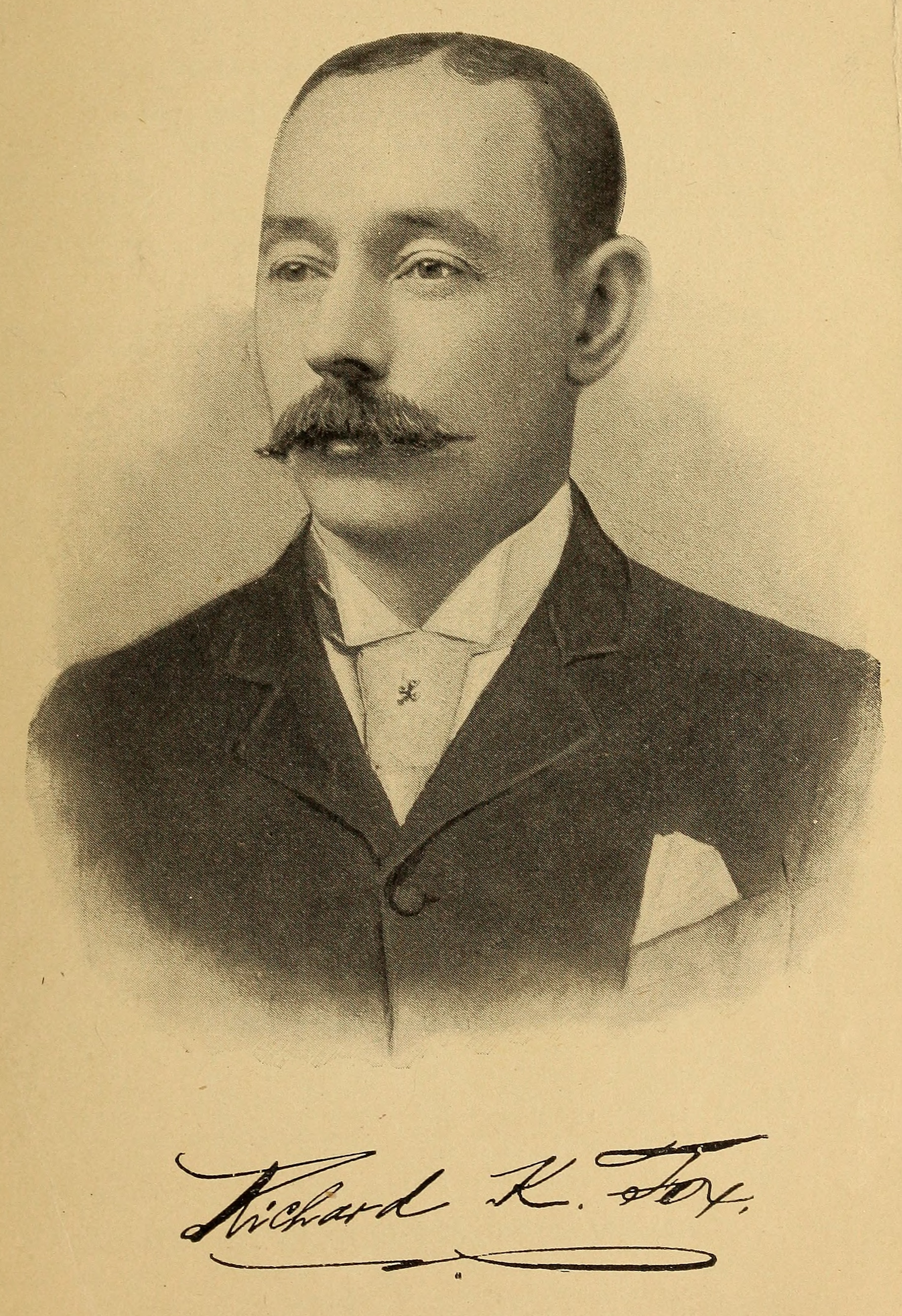
Soon after the Nonpareil’s match against the Umbria team, The Sun reported “the United Umbrians Amateur Athletic Club” had thanked Richard K. Fox, the Belfast-born sports impresario and publisher of the National Police Gazette, for a donation in support of the club.[13] The Police Gazette was one of the United States’ most prominent sporting periodicals during the nineteenth-century,” one that “revolutionised American sport and helped push it towards greater levels of organization and promotion.”[14] Fox’s New York Times obituary noted, “In order to make the paper better known he offered many prizes for sporting events, and it is estimated he gave away more than $1,000,000 in this way.”[15]
The Umbrians were described as having “an unbeaten football record among the clubs connected with the large transatlantic lines.” Ten steamships from four lines possessed “good football teams”: Etruria, Aurania, Umbria, and Servia of the Cunard Line; Teutonic and Majestic of the White Star Line; City of Paris and City of New York of the Inman Line; and Alaska and Arizona of the Guion Line. The article concluded, “All of the teams indulge in practice at the association game when in dock at Liverpool and New York.” The same report announced that Fox had “presented a cup to be confined to the football teams of the transatlantic liners.” The first match for the cup would reportedly feature the Umbrians against a team from the White Star Line’s Teutonic, probably “at Ridgewood” in Queens, the site of the Nonpareil-Umbria match.[16] Later reports clarified that competition for the Richard K. Fox Trophy, also referred to as the “Police Gazette championship international football trophy,” was open to “any football club belonging to any steamer…no matter from what country or port the steamer hailed.”[17] In practice the teams that competed for the transatlantic championship appear to have all been British-flagged vessels.
To date, few details about the structure of competition for the Fox Trophy have been located and only scant records remain of matches played for the transatlantic championship. A report in September 1891 described the crew of the White Star liner Majestic as “second to none in all branches of sport.”[18] The Liverpool Echo reported in December 1891 the United Umbrians’ 12-2 “Atlantic Cup” win over the team from the Inman Line’s City of Berlin. That report said Fox had offered the cup “two years ago” but the cup “has never yet been won owing to the ships not being able to arrange a meeting.”[19] A Brooklyn Daily Eagle report in February 1892 stated plainly, “The Majestics, under Captain Wise holds the trans-Atlantic championship.” Confusingly, a Paterson newspaper reported in March 1892 the Majestics were two-time champions, describing the British club as “winners of the Transatlantic challenge cup, also winners of the Richard K. Fox club [sic].”[20]
It is apparent the pursuit of the championship engendered strong feelings. Soon after the February 1892 report describing the Majestics as champions, representatives of the Umbria team disputed the claim. Asserting the competition was not over until May 1 and that having “successfully defeated the teams representing the Inman, Anchor, and National Lines,” the Umbrians argued the point tally between the two liners “is close.” The Umbrians further argued there was no opportunity for the two teams to play one another, “for while the Majestic is going to Liverpool the Umbria is on her way to New York.” Finally, the Umbrians alleged the Majestics team “was made up of professional players, who had been engaged as stewards on purpose to win the trophy.” Chief Steward John Bartholomew of the Majestic, “an enthusiastic player under association rules,” denied the Umbrians’ accusation. The professionalism claim was so newsworthy that it was reported in Fall River.[21]
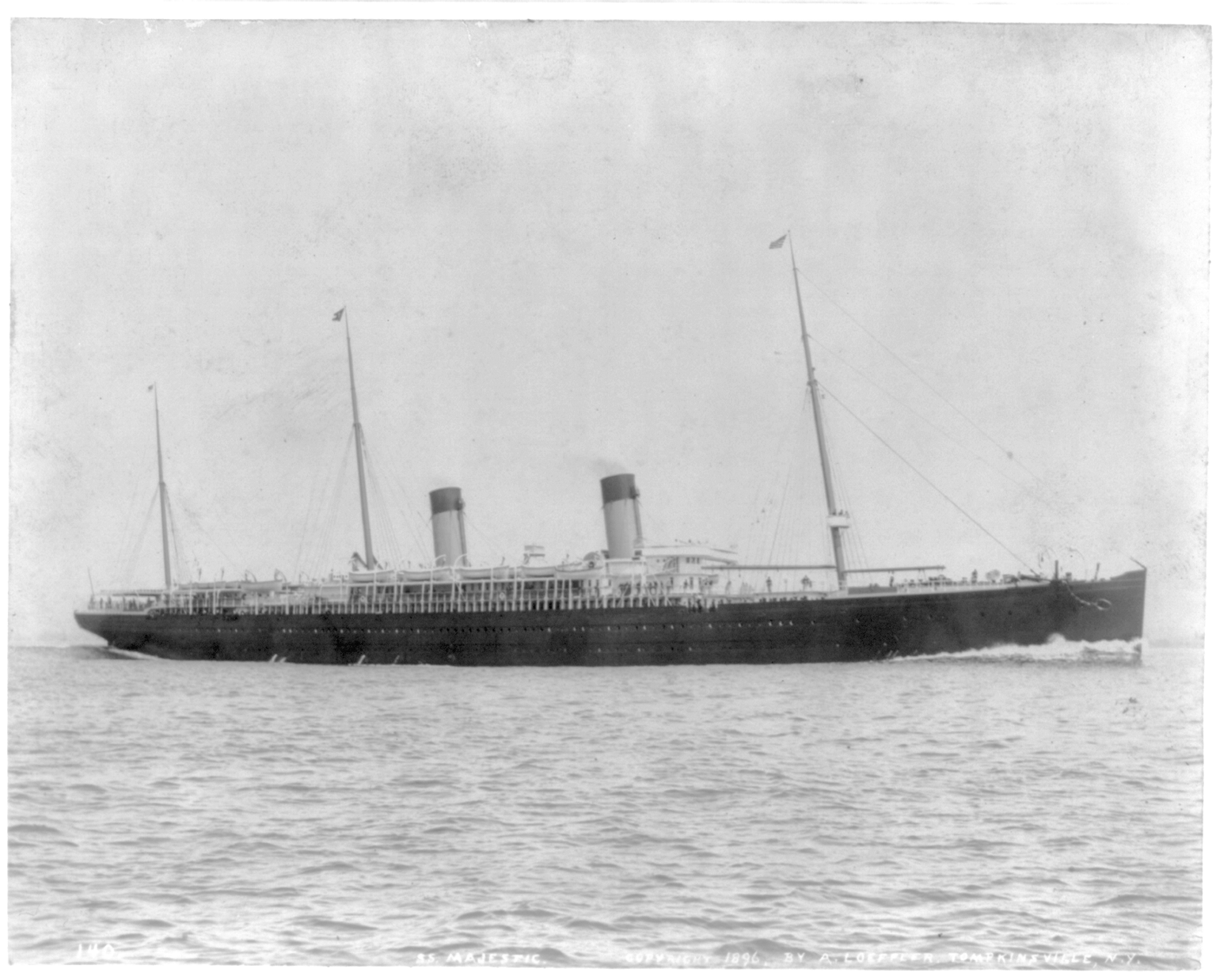
Three weeks after the Umbrian’s claims were reported, and three days before the official end of competition on May 1, Majestics representative T. Williamson contacted Richard K. Fox to report yet another ship crew team had forfeited rather than face the Majestics, “thus making us 24 points in the competition.” If the Majestics were undefeated and victorious in matches for the transatlantic championship, the point system of the day – two points for a win, one point for a draw — would mean the Majestics had won twelve victories over other ocean liner teams, even more if drawn matches were also involved. Williamson further explained the Majestics were “looking forward to an early game with the Umbria and prove (in the season) that we are entitled to call ourselves the holders of the R. K. Fox trophy,” adding, “I hope that you are satisfied that in every particular we have carried out your rules and exerted ourselves to become the proud possessors of the trophy.”[22]
No reports have been found explicitly declaring the Majestic’s soccer team winners of the Fox Trophy after May 1, 1892. But beginning with the 1891-92 season through the 1893-94 season, reports of matches involving the Majestics far outnumber those of other ship crew teams, making up eighteen of the twenty-seven matches identified, including a 4-1 win over the Umbrians on the St. George Athletic Club grounds in Hoboken on October 5, 1893.[23] This suggests the Majestics were champions, one whose growing reputation made them the most desirable British ship crew team for local clubs to face. During this period, matches against local sides account for fifteen of the eighteen Majestic matches identified.
Through the 1892-93 season, the Majestics were undefeated against local sides, often by lopsided scorelines, including a 6-1 win over New York’s Corinthian Field Club in January 1892, a 6-2 win over Paterson FC in March 1892, a 5-1 win over West Hoboken’s Hoboken’s Americus club in October 1892, and an 8-0 win over the same team in April 1893.[24] With the Majestics “scoring victories over all the teams in this vicinity,” a “Metropolitan team” made up of “the strongest players in this vicinity” was organized to face the White Star Linemen but no reports have been found to confirm the game was played.[25]
The New York Times story on ocean liner athletic clubs reported the Majestics played “some of the strongest clubs in England.” As of this writing, the only English newspaper report of the Majestics playing in England is a preview of a match against the United Victuallers, a founding member of the Liverpool and District Thursday League. Another report of a 1-1 draw between the United Victuallers and the team from the Campania has also been found.[26] Among the list of the Thursday League’s founding clubs are Police Athletic, Fleming’s Assistants, Hairdressers’ Half Holiday, East End Hairdressers, and Post-office. Whether these were among the strongest clubs in Liverpool, let alone the strongest in England, is unlikely. Such exaggeration is common in soccer reporting in US newspapers of the era, especially regarding the playing history of newly arrived players from England and Scotland. Certainly, among the teams the Majestics faced when their ship docked in New York were some of the strongest clubs within the footprint of the American Football Association’s Western District.
Also common in newspaper reports of the era are discussions of how well US clubs would fare in the Old Country, just as today American soccer fans might debate how competitive a Major League Soccer would be in England’s Premier League or Championship. The record of the Canadian American team – thirteen wins, fourteen draws and thirty-one defeats — suggests not well. But the small squad of fewer than twenty players endured a grueling schedule of fifty-eight games in one hundred and thirty-five days. An average of a game every 2.3 days hardly makes for a fair comparison. Matches against British ocean liner teams thus provides perhaps the most realistic sense of the quality of US clubs in the New York Harbor area in the 1890s.
White Star Liners in the AFA and connected to early professional play
On December 4, 1893, the Majestic team “was defeated for the first time this season,” falling 1-0 to the Kearny YMCU team in front of “one of the largest crowds that ever assembled in Cosmopolitan Park.” The Kearny YMCU team later competed in the American Association of Professional Football as the Newark team or Kearney Unions.[27] More important than the Majestics first-ever defeat to a US-based club was this line in the New York Times match report: “The teams belong to the American Football Association.”[28]
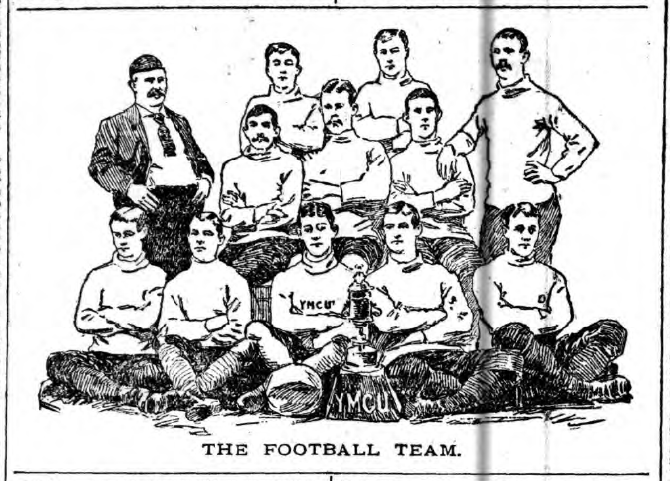
If the Majestics were a member of the AFA for the 1893-94 season, they did not enter the American Cup tournament, continuing a schedule of matches against local sides as well as teams from other British liners. Gradually, the Majestics’ superiority on the field against local clubs began to diminish, with Staten Island managing a draw before the West Side Shamrocks defeated the sailors 6-5 in January 1894. The Majestics bounced back with a commanding 8-3 win over the New York Cosmopolitans in February before the Kearny YMCU team beat them again with a decisive 4-0 victory in April 1894.[29] Meanwhile, reports of matches against local sides against the team from the Majestic’s sistership the Teutonic began to appear, with the Teutonics issuing calls for opponents in both US and English newspapers.[30]
In September 1894, the Teutonics, also called the Teutonic Rovers and the White Star Athletics, were among the pool of teams included in the AFA’s Western District for the American Cup tournament, drawing the Paterson True Blues as their first-round opponent.[31] Entering the American Cup tournament was bold for a ship-based team. Transatlantic ocean liners operated on a regular schedule, but mechanical problems or bad weather might delay a ship’s arrival in port. The True Blues, for example, had scheduled a match against the team from the Cunard Line’s Campania a week before the American Cup match against the Teutonics, but the match was postponed when four days of heavy gales resulted in the ship arriving late in port.[32] Two days before facing the True Blues the Teutonics defeated the Campania team 5-4 in West Hoboken; the Teutonics had previously defeated the Campanias in Liverpool on October 1. On November 17, 1894, the True Blues eliminated the Teutonics from the American Cup with 6-3 victory at Olympic Park in Lakeview, thus ending the possibility that a British team based in Liverpool could win what was at the time the closest thing to an American national championship. The next day, the Teutonics defeated Newark Scottish Americans 5-2 at Wiedenmeyer’s Park in Newark.[33]
The same September report announcing the Teutonics’ AFA membership also announced the AFA’s ban of players who had signed contracts with the American League of Professional Football, backed by baseball’s National League, and the rival American Association of Professional Football.[34] It is unclear if the Majestics maintained their AFA membership for the 1894-95 season. If they did, they took little notice of the AFA’s ban. Before the start of league play on September 28, 1894, the Majestics played the New York ALPF club, losing 6-1 in what was the New York team’s second practice game. The same was true of the Teutonics, whose ship had aboard players who had signed with the Baltimore ALPF team when it arrived in New York on October 10. On October 16, in what turned out to be the last day of ALPF league matches and the day before the Teutonic began its return voyage to Liverpool, the contest between the New York and Boston ALPF teams at the Polo Grounds was preceded by an exhibition match that saw the Teutonics defeat the Campania team 4-0. On October 28, 1894, the Majestics were defeated 6-3 by the Paterson AAPF team, who later defeated the Teutonics 7-0 on January 14, 1895. No reports have been found of either the Majestics or the Teutonics being sanctioned by the AFA for playing against banned teams. The True Blues in April 1895 again defeated the Teutonics, now referred to as the “champions of the Atlantic Coast,” prevailing again that November with an emphatic 8-3 win. In December 1895, the AFA lifted its ban on the former AAPF and ALPF professionals, rendering the question of sanctions moot.[35]
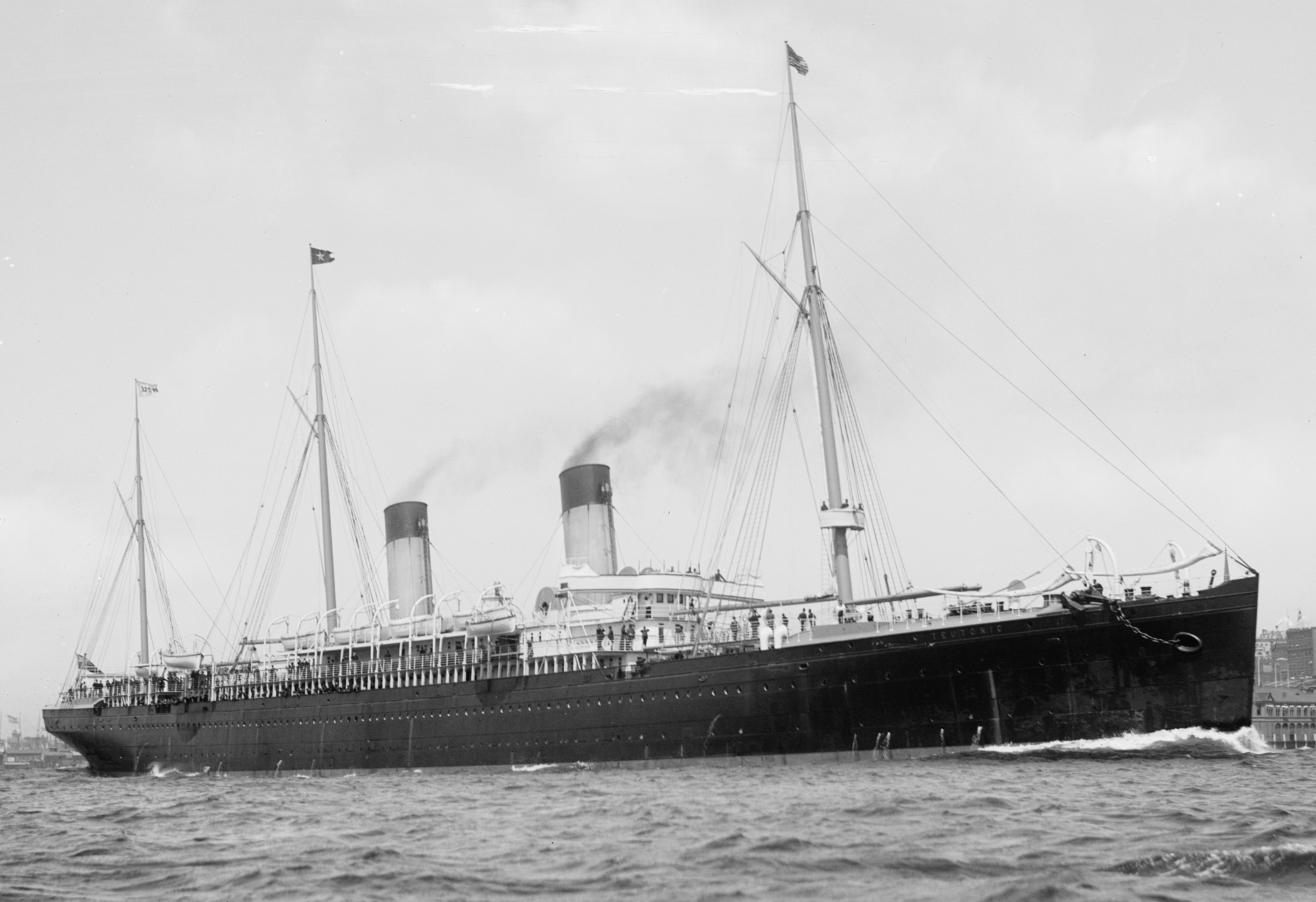
Players from British ocean liner crew teams also appeared on local sides. Robert B. Trainor (sometimes spelled Trainer or Traynor), “acknowledged to be the all-round champion among the stewards crossing the Atlantic Ocean,” played as a forward for the Majestics before apparently settling in the US. When the Majestics were defeated by the West Side Shamrocks in January 1894, Trainor lined up as a halfback for the Shamrocks. The Staten Island Athletic Club Labor Day carnival that year included a short exhibition match between “Trainer’s Team” and the Majestics. When the Majestics were defeated by the New York ALPF team in September 1894, Trainor was at left wing for New York, going on to score one goal in three league appearances for the professional side, captaining the team in at least one of his appearances.[36]
If the end of Trainor’s playing career with the Majestics later saw him play against former crewmates, onetime foes could also find themselves on the same team. In a “somewhat quarrelsome game” between Americus and the Majestics in March 1893, the legs of Majestics left wing J. Jones got “a trifle mixed up” with those of Americus defender G. Seller. Spectators hoped the resulting argument would be settled “Queensberry style.” Almost exactly a year later, Jones was playing alongside Seller for Americus in the Hoboken team’s win over Harlem’s Red Stars in the second round of the short-lived American Association Football League’s championship series. Less than two weeks before, the AAFL had denied the Teutonics’ bid to join the competition for the Cleary Cup: “as they could only play here one Sunday in a month, the league did not see how they could adjust their schedule in justice to other clubs and their application was rejected.”[37]
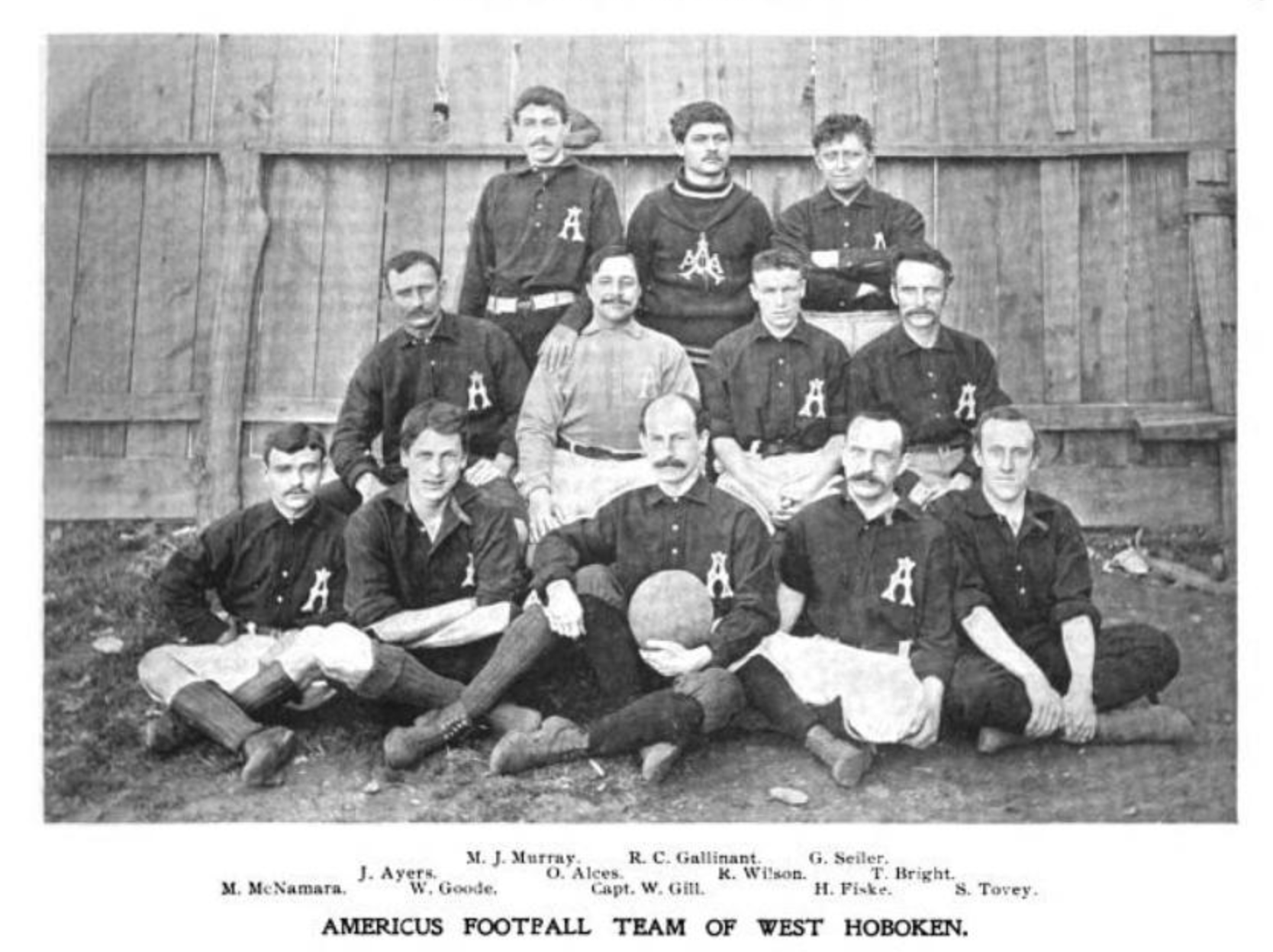
That local clubs seemed to view British ship crew teams as talent reservoirs for use in important matches continued through the second half of the 1890s. For the American Cup semifinal against the True Blues in February 1896, New York’s International club enlisted players from the Teutonic to strengthen their side, only to lose 3-1. The True Blues went on to defeat Fall River Olympics 7-2 for the American Cup championship. In goal for the champions in the final was James McKay, captain of the soccer team of the Cunard Line’s Lucania and goalkeeper for all six of the New York ALPF team’s league games.[38] As was the case with Americus in the AAFL, players were also borrowed from British ocean liner teams for play outside of the American Cup tournament. When the Brooklyn Wanderers defeated Newark Scottish Americans 6-4 in a National Association Football match in April 1895, one report observed the Wanderers were “considerably strengthened by the addition of Jack Jones and J. Taylor, of the steamship Majestic.”[39] Local players also assisted ocean liner teams. Several players from the Internationals filled out the roster of the team from the American Lines’ New York when they were defeated by the Brooklyn Wanderers in October 1896.[40]
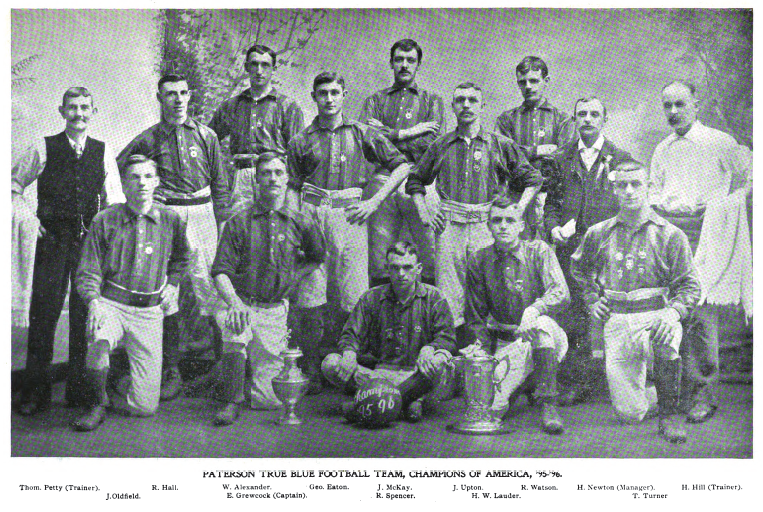
Majestics give way to Teutonics
If the Majestics were the premier British ship crew team playing New York and Northern New Jersey clubs in the first half of the 1890s, the Teutonics, soon styled “champions of the ocean,” were ascendent in the decade’s second half.[41] By this time soccer was beginning to feel the effects of the Panic of 1893 and the momentum the sport had enjoyed since the mid 1880s was clearly slowing. With few first-class teams to challenge them, leading clubs like the Newark Scottish Americans and the Paterson True Blues looked to matches against British ocean liner teams to sharpen them ahead of American Cup play. A report on the 2-2 draw between the Scottish Americans and Teutonics on November 29, 1896, made clear that “games of this kind are what the Scots need now” ahead of their cup tie with the Kearny Athletics, a team whose origins were with the Kearny YMCU club. Before that meeting, two Teutonic matches in the US, a 1-1 draw against the Scottish Americans on November 1, 1896 and a 7-2 over the Brooklyn Wanderers on November 3, were reported in England by the Liverpool Daily Post under the headline “Football in the States”.[42] One week before the start of the final series of matches for the 1896-97 American Cup against the Manz team of Philadelphia, the True Blues played the Teutonics, defeating them 3-2, a much tighter scoreline than the 6-1 victory the True Blues had enjoyed over the “champions of the ocean liners” the previous January.[43] Manz still won the cup.
By the end of the decade, few matches involving British ocean liner teams appeared in New York and New Jersey newspapers. Still, as late as October 1899, one report noted the Centreville AC team would feature five players from the Teutonics when they faced the Paterson team: “These men sail the seas but are fast when they don their uniforms for football work.”[44]
Aside from brief previews of two matches against the Glasgow-based Allan Line’s Laurentian from 1903, no further reports of matches against British ship crew teams have been found until 1905. But even those 1903 previews repeat themes familiar from descriptions of British ship crew teams from a decade before. The Laurentian has a “strong team,” one “composed of some of the best football players of England and Scotland,” and had previously defeated the Majestics. Interestingly, one preview notes the local Paterson team had “gone to a big expense to bring the team here,” and that the match was part of the team’s efforts “to revive this sport, which has of late years been falling off.”[45]
Shortly after the completion of the Pilgrims tour, the Royal Navy’s Second Cruiser Squadron visited New York under the command of Prince Louis Battenberg. Two matches were played on November 11, with the HMS Bedford team defeating the recently formed Columbia University team 4-1, and the HMS Cornwall falling 3-2 to the Staten Island team. On November 16, 1905, the Staten Islanders and the Cornwalls met again in a scoreless draw. Before the cruiser squadron arrived in New York, an exhibition game between the squadron flagship Drake and the Cornwall was played at the US Naval Academy in Annapolis, the first soccer match played there.[46]
When the Second Cruiser Squadron arrived in New York, one report said the “British Jackies” would play a match against the team from the White Star liner Baltic on November 10. Attending that match to scout the Baltics were members of the Paterson Rangers, who were scheduled to play the Baltics on November 12 in Paterson at Willard Park. While no reports have been found to confirm the match between a Royal Navy team and the liner crew have been found, one report bombastically said the Baltics had “played all the principal teams in England,” including defeating “the famous Pilgrims of London” only “several weeks” before.[47] As we have seen, claims about the quality of opposition British ship crew teams faced at home were filled with exaggeration. Just how the Baltics were supposed to have been able to play the Pilgrims was also not explained. The Pilgrims first landed in North America in Montreal on September 2 aboard the Allan Line’s Bavarian and returned to England aboard the Teutonic on October 25 so the Pilgrim’s ocean travels did not involve the Baltic. Additionally, there is little overlap between the Pilgrims and the Baltics being in New York at the same time and no reports have been found confirming the Baltics and Pilgrims met on the pitch.[48]
One preview of the Paterson Rangers match against the Baltics described the British team as holding “the championship in the Ocean league,” adding Rangers manager Thomas Mooney had to offer “a guarantee of a considerable sum of money” to book the Baltics as opponents. The report also noted, “It is not a well known fact that on every ocean liner there are association football teams, but there are and the rivalry between them is keen and once they get ashore great games result between the rival crews.”[49] This observation underscores the decline of matches between local sides and British ship crew teams in the New York Harbor area and suggest matches between liner-based teams now were played only in England. In the event, Paterson Rangers easily defeated the Baltics, 5-1. When the two sides were scheduled to meet again in January 1906, a preview again mentioned the Baltics “ocean championship” claim. Now, the claim was met with this reply: “whatever that may consist of.”[50]
Endnotes
[1] “Visits of British Teams,” in Spalding’s Official Association “Soccer” Foot Ball Guide, edited by Henry Philip Burchell, 13. New York: American Sports Publishing Company, 1907.
[2] “Football,” New York Herald, Dec. 1, 1878, 7.
[3] Multiple reports discuss the tour. See for example, “International Football,” The Sun (New York), Jun. 23, 1890, 6; “The International Football Series,” Fall River Daily Evening News, Jul. 21, 1890, 8; “The Scottish Football Team,” Fall River Daily Evening News, Aug. 1, 1890, 7; “Football Passes,” Fall River Daily Evening News, Aug. 15, 1890, 8; “Scotch Footballists Not Coming Over at Present,” Fall River Daily Evening News, Aug. 25, 1890, 8.
[4] “Will Send a Good Team Over,” Chicago Tribune, Jan. 7, 1893, 6; “Cricketers Coming,” Ottawa Daily Citizen, Jan. 11, 1893, 8; “English Corinthians Will Not Come,” Chicago Tribune, Jul. 4, 1893, 6; “English Sockerites May Come,” St. Louis Republic, Dec. 1, 1904, 9; English Football Team to Play Here,” New York Times, Jul 5, 1905, 11; “Football Tour Abandoned,” New York Times, Aug. 14, 1905, 10.
[5] “English Eleven Coming Here,” Brooklyn Daily Eagle, Jun. 25, 1894, 5; “Prospect of International Football,” The Sun (New York), Oct. 13, 1894, 3; “To Visit America,” Cincinnati Enquirer, Mar. 18, 1898, 4.
[6] “Association Game Becoming Popular,” Philadelphia Inquirer, December 11, 1904, 15.
[7] “The Association Game Flourishes,” Philadelphia Inquirer, October 20, 1901, 12; Ed Farnsworth, “Philly’s first international friendly,” Society for American Soccer History, May 20, 2020, https://www.ussoccerhistory.org/phillys-first-international/; Ed Farnsworth, “Quaker City Kickers: Philadelphia Soccer’s Growth from an Immigrant Pastime to a National Leader,” in Soccer Frontiers: The Global Game in the United States 1863-1913, ed. Chris Bolsmann and George Kioussis (Knoxville: The University of Tennessee Press, 2021), 115-119.
[8] Ed Farnsworth, “The rise and fall: Fall River and Pawtucket soccer, 1883-1896,” Society for American Soccer History, Feb. 1, 2022, https://www.ussoccerhistory.org/the-rise-and-fall-of-organized-soccer-in-fall-river-and-pawtucket-1883-1896/; Michael Kielty, “The American Footballers of 1891.” Accessed Oct. 20, 2021, https://spark.adobe.com/page/nXXbhmjLfz6IW/
[9] “Football at Ridgewood,” New York Herald, Nov. 20, 1890, 9.
[10] “J. G. Messner Wins,” The Morning Call (Paterson), Apr. 6, 1895, 1.
[11] “A Grand Race by Atlantic Stewards,” The Sun (New York), Sep. 18, 1891, 4.
[12] “Sailors Who are Athletes,” New York Times, Oct. 7, 1894, 15.
[13] “Odds and Ends of Sports,” The Sun (New York), Jan. 6, 1891, 4.
[14] Conor Heffernan, “Richard K, Fox, the National Police Gazette and Ireland’s Sporting Memory,” Immigrants & Minorities 39, no. 1 (2021), 32-33.
[15] “Richard K. Fox Dies; Patron of Sports,” New York Times, Nov. 15, 1922, 19.
[16] “Dribblings,” The Sun (New York), Feb. 6, 1891, 4.
[17] “Notes of Numerous Sports,” Philadelphia Inquirer, Feb. 16, 1891, 3; “What the Sports are Doing,” National Police Gazette, Feb. 28, 1891, 10.
[18] “A Grand Race by Atlantic Stewards,” 4.
[19] “United Umbrians v. City of Berlin,” Liverpool Echo, Dec. 26, 1891, 8.
[20] “Two Games of Football,” Brooklyn Daily Eagle, Feb. 28, 1892, 20; No headline, The News (Paterson), Mar. 25, 1892, 8.
[21] “Here Is a Difficulty,” New York Times, Apr. 8, 1892, 2; “Sailors Who are Athletes,” 15; “Football Passes,” Fall River Daily Evening News, Apr. 11, 1892, 8.
[22] “Transatlantic Football Championship,” The Sun (New York), Apr. 28, 1892, 3.
[23] “The Football Field,” Newark Evening Times, Oct. 6, 1893, 7.
[24] “Odds and Ends of Sport,” The Sun (New York) Jan. 31, 1892; “Under English Rules,” New York Times, Mar. 27, 1892, 3; “Majestic Kickers Win,” New York Herald, Oct. 17, 1892, 9; “Hot Work at Football,” The Sun (New York), Mar 19, 1893, 5.
[25] “To Try to Beat the Majestics,” New York Times, Apr. 14, 1893, 11.
[26] “Football,” Liverpool Mercury, Nov. 14, 1894, 7; “Football,” Liverpool Mercury, Mar. 7, 1891, 7; “United Victuallers v. Campania Athletic,” Liverpool Mercury, Nov. 2, 1894, 7.
[27] Ed Farnsworth, “The AAPF and the ALPF: The beginnings of professional league soccer in the United States,” Society for American Soccer History, July 24, 2018, https://www.ussoccerhistory.org/the-aapf-and-the-alpf-the-beginnings-of-professional-league-soccer-in-the-united-states/
[28] “Majestics Beaten at Football,” New York Times, Dec. 4, 1893, 8.
[29] “Close Game of Association Football Between Crack Teams,” New York Times, Jan 21, 1894, 3; “Majestics Beaten by the Shamrocks,” The Sun (New York), Jan. 22, 1894, 6; “The Sailors Made Rings Around Them,” The Sun (New York), Feb. 19, 1894, 6; “Majestics Beaten at Football,” New York Times, Apr. 15, 1894, 7; “Sailor Boys Beaten at Football,” The Sun (New York), Apr. 15, 1894, 8.
[30] “Many Football Games,” The Sun (New York), Oct. 7, 1894, 8, [Classified Advertisement], Liverpool Echo, Nov. 28, 1894, 1.
[31] “American Football Association,” The Morning Call (Paterson), September 18, 1894, 5.
[32] “Some Good Bowling,” The Morning Call (Paterson), Nov. 10, 1894, 1; “The Campania in Port,” Brooklyn Daily Eagle, Nov. 11, 1894, 1.
[33] “Football Notes,” The Sun (New York), Nov. 16, 1894, 4; “Teutonic Rovers v. Campania Athletic,” Liverpool Mercury, Oct. 4, 1894, 7; “Again Victorious,” Paterson News, Nov. 19, 1894, 1; “Football Notes,” The Sun (New York), Nov. 20, 1894, 4.
[34] “American Football Association,” The Morning Call (Paterson), Sep. 18, 1894, 5.
[35] “The Majestic Men Defeated,” New York Tribune, Sep. 29, 1894, 3; “Steamships on Time,” The Evening World (New York), Oct. 10, 1894, 2; “Football,” Fall River Daily Evening News, Oct. 20, 1894, 1; “White Star Line,” The Sun (New York), Oct. 11, 1894, 10; “Boston’s Strong Team Play,” Evening World (New York), Oct. 16, 1894, 1; “The Athletic Record,” Paterson Daily Press, Oct. 29, 1894, 1; “Paterson Sports,” Passaic Daily Herald, Oct. 29, 1894, 4; “In the Sporting Arena,” The News (Paterson), Jan. 14, 1895, 1; “On Alley and Field,” Paterson Daily Guardian, Mar. 8, 1895, 1; “Sports and Pastimes,” The News (Paterson), Apr. 8. 1895, 2; “Easy for the Entre Nous,” The News (Paterson), Dec. 2, 1895, 1.
[36] “A Grand Race by Atlantic Stewards,” The Sun (New York), Sep. 18, 1891, 4; “Majestics Beaten by the Shamrocks,” The Sun (New York), Jan. 22, 1894, 6; “Staten Island’s Carnival,” New York Times, Sep. 4, 1894, 10;“The Majestic Men Defeated,” 3; “New York Takes One,” Philadelphia Inquirer, Oct. 7, 1894, 3; “Shut out by Brooklyn,” Brooklyn Daily Eagle, Oct. 16, 1894, 5; “Boston 3, New York 2,” Boston Daily Globe, Oct. 17, 1894, 5.
[37] “Hot Work at Football,” The Sun (New York), Mar. 19, 1893, 5; “Two Games of Association Football,” New York Tribune, Mar. 19, 1894, 12; “Association Football League,” New York Herald, Mar. 7, 1894, 12.
[38] “Bowled a Tie Game,” The News (Paterson) Feb. 21, 1896, 1; “True Blues, Hurrah!” Evening News (Paterson), Apr. 20, 1896, 6; “Football Season Will Open Today,” The Morning Call (Paterson), Sep. 19, 1896, 8.
[39] “Foot Ball Players Kicking,” Newark Evening News, Apr. 22, 1895, 6.
[40] “Association Football,” Amateur Athlete 2, no. 6 (Oct. 29, 1896): 15.
[41] “Football To-Morrow,” Brooklyn Citizen, Mar. 5, 1898, 4.
[42] “Football in the States,” Liverpool Daily Post, Nov. 12, 1896, 6.
[43] “Association Football,” Amateur Athlete 2, no. 11 (Dec. 3, 1896): 6; “Newarks Tomorrow,” The Evening News (Paterson), Apr. 15, 1897, 1; “Conquered the Cubans,” The Evening News (Paterson), Apr. 19, 1897, 2; “Football,” The Morning Call (Paterson), Jan. 22, 1897, 8; “Athletic on Dit,” Passaic Daily Herald, Jan. 25, 1897, 1.
[44] “Sport for Tomorrow,” The News (Paterson), Oct. 21, 1899, 1.
[45] “Association Football,” The Morning Call (Paterson), Nov. 21, 1903, 3; “Association Football,” The Morning Call (Paterson), Nov. 19, 1903, 3;
[46] “Association Football,” New York Times, Nov. 12, 1905, 19; “Sailors Tie Champions,” New York Times, Nov. 17, 1905, 11; “Middies Look at Socker,” Baltimore Sun, Nov. 7, 1905, 8.
[47] “Association Football Doings,” The News (Paterson), Nov. 10, 1905, 9; “Baltic Steamship Crew Due Here Tomorrow,” The News (Paterson), Nov. 11, 1905, 9.
[48] “Football Players Sail,” New York Daily Tribune, Aug. 25, 1905, 14; “The Pilgrims Here,” The Gazette (Montreal), Sep. 4, 1905, 4; “White Star Line,” New York Tribune, Oct. 18, 1905, 15; “Football for President,” New York Times, Oct. 16, 1905, 10; “Carnegie Says Cities Should Own Utilities,” The World (New York), Nov. 10, 1905, 3; “Pilgrims Leave for Home,” New York Times, Oct. 26, 1905, 11.
[49] “Baltic Steamship Crew to Play Paterson Rangers,” The News (Paterson), Nov. 7, 1905, 9.
[50] “True Blues Want Game with the Rangers,” The News (Paterson), Nov. 13, 1905, 9; “Football Games Booked Today and Tomorrow,” The News (Paterson), Jan. 13, 1906, 9.

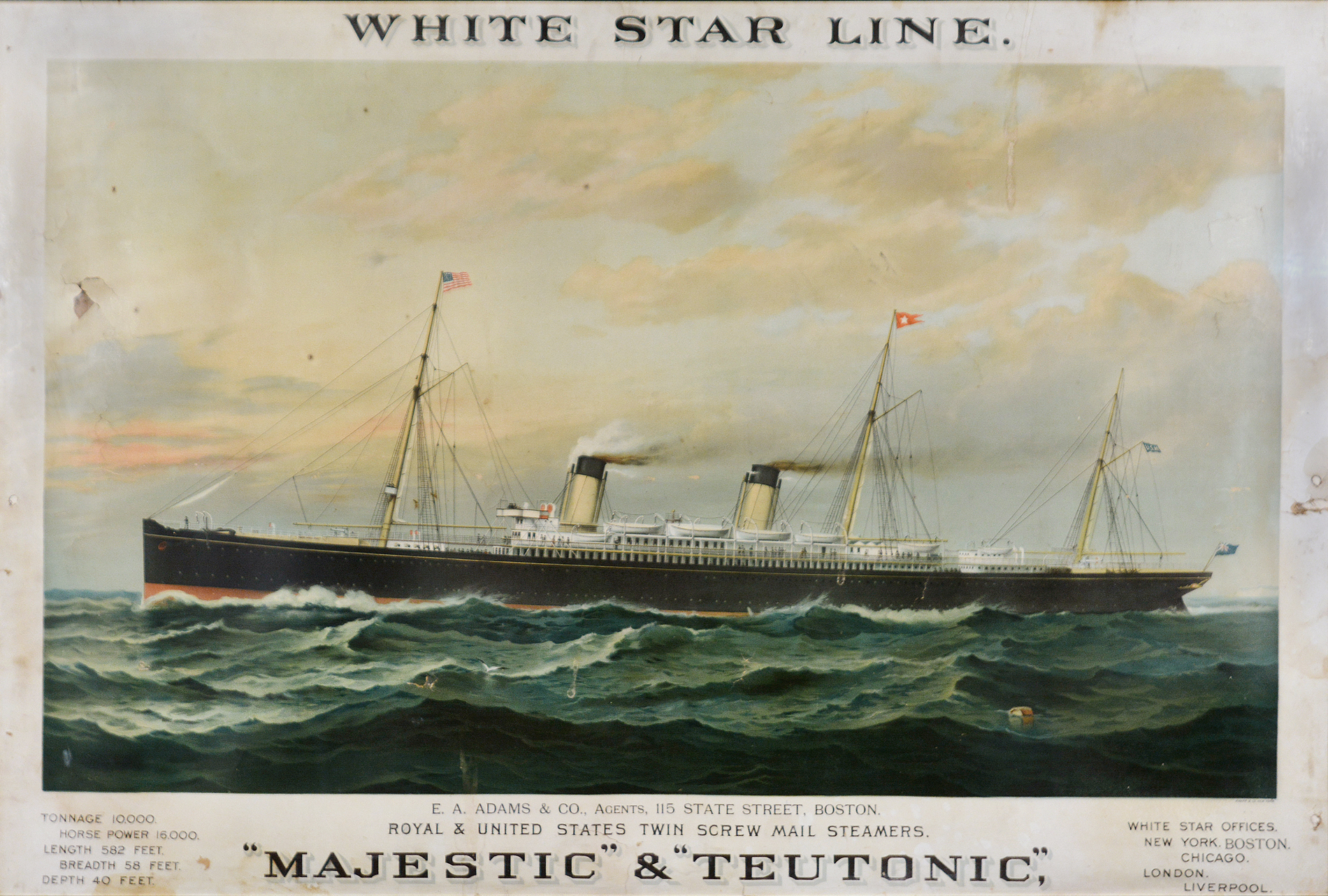
Pingback: Sailor lads, jolly tars, and rovers of the briny deep: International ship-crew soccer matches in the US, 1890-1905, part 2 – Society for American Soccer History